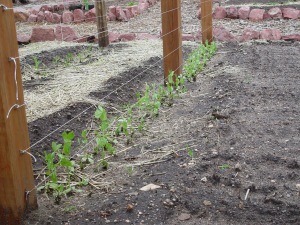Category Archives: Critters
Voles
The picture above is reshared from the Colorado State Extension Service, it is a picture of a cute little critter called a vole and it’s relatives or cousins are really enjoying our garden this year.
Here is one of it’s many little entrances
Remember our Egyptian walking onions looking all nice and wonderful earlier this spring.
Well the little critters moved in and ate till there hearts were content, needless to say I was only able to save 5 small shoots and moved them to another location in the garden.
They are not only enjoying our vegetables but have had a wonderful banquet on a few of our fruit trees as well.
The picture below is what a fruit tree root ball should look like.
and here below is what our peach tree root ball looks like after there feast, needless to say the tree is a gonner. This damage was mainly done during the winter.
They have gotten into the garlic patch as well !
I did a bit of research and here is some information about voles re shared from the Colorado State Extension Service.
“As the deep snows in our yards or on our properties recede, you may be greeted by one or more pathways in the snow. If you’re lucky, these paths only run from one burrow opening to another. Unfortunately, some of the trails probably lead to some of your favorite trees and the damage caused by the animals girdling (gnawing the bark off all the way around the plant) the tree will kill it.
The furry culprit in this destruction? The vole.
Also known as meadow mice, these small, stocky short-tailed rodents can cause severe damage in landscape, orchard, windbreak or timber plantings. They measure from 4 to 8.5 inches long and vary in color from brown to gray. They are pudgy, with blunt faces and small eyes, small and sometimes inconspicuous ears, short legs, and a short and scantily haired tail (the long-tailed vole is an exception).
Voles are active day and night throughout the year. They usually live 2 to 16 months. Voles construct many surface runways and underground tunnels with many burrow entrances.
Voles are extremely prolific, having three to six young per litter and three to 12 litters per year. Females may become pregnant at three weeks of age and voles breed almost year round. Large population fluctuations ranging from 14 to 500 voles per acre are common.
Most vole damage occurs in the winter when voles move through their grass runways under protection of snow or where there are thick, tall grasses and weeds. Heaviest vole damage seems to coincide with years of heavy snowfall.”
With that being said – we have a vole community thriving in our garden and as I am writing this I am sure that I can hear their cheers of celebration over the goodies they have found and are inviting many more to join in the feast. Dinner anyone?
I don’t think they have found the pea’s yet, the 4 varieties we planted are still looking good!












